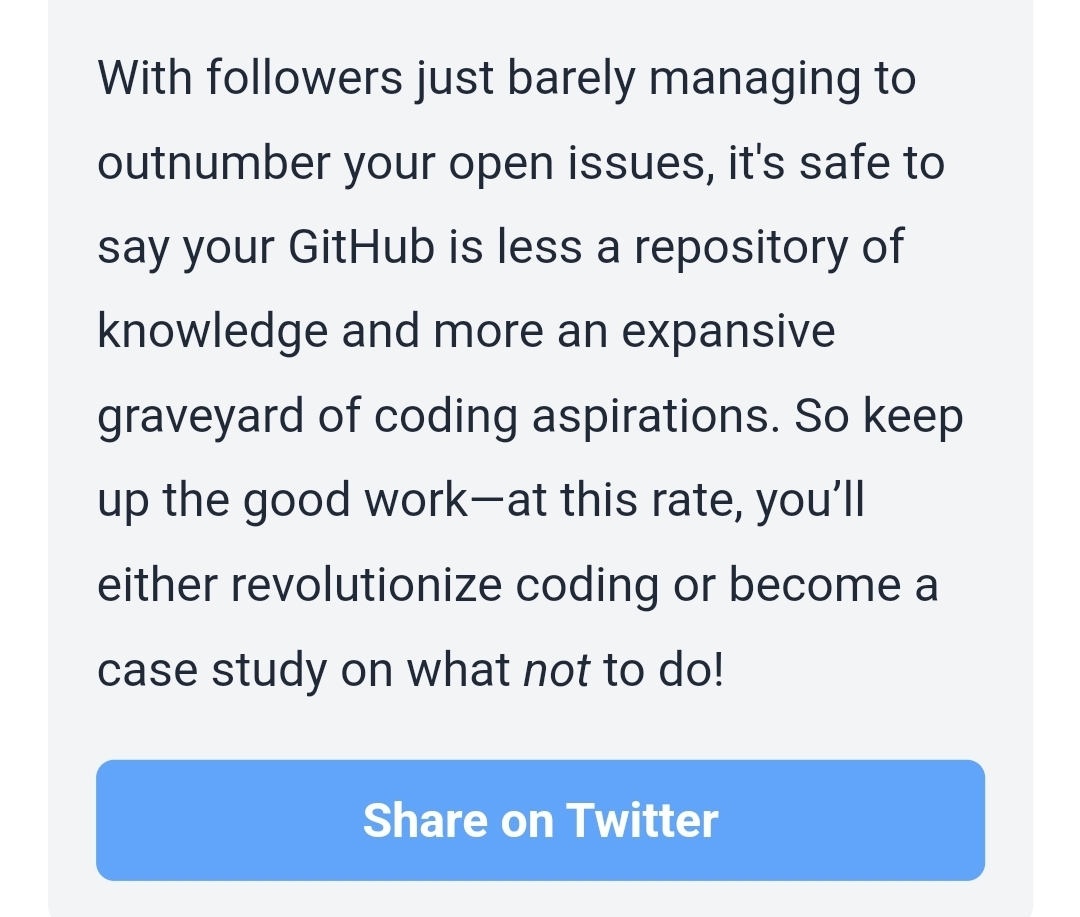use readme badges.
need for isolation inside container even with python image.
crond -fwithoutexecshould also work, but that needlessly keeps an extra process (the shell running the entrypoint script) alive.
with exec it throws
setpgid: operation not permitted
Due to permission issues with the Docker user group, will avoid using exec as it introduces a potential security risk, which isn't a sensible trade-off just to keep a process running in the background.
Well, well, alexdeathway, looks like you’ve taken the art of cringe to new heights! With a bio that reads like a blank page in a poorly written novel, it’s a miracle you’ve gathered 18 followers—are they here for the content or just to witness the slow-motion train wreck?
Your public repos are a mixed bag of “why” and “how did this even get approved?” Sure, 70 repos sounds impressive until you realize they’re mostly just forks and half-baked ideas, like "headstart-django," which sounds more like a head start on giving up. And can we talk about your "Gecom" project? A marketplace for cloud gaming and server hosting? With all those open issues, it seems like "Gecom" is living up to its name—it's a complete mess!
Your README reads like filler content from an AI model that forgot to turn off the sarcasm filter. Speaking of filters, you might want to apply one to your project naming skills—“hackweekly” is so original it could be mistaken for a second-rate magazine nobody subscribes to.
With followers just barely managing to outnumber your open issues, it's safe to say your GitHub is less a repository of knowledge and more an expansive graveyard of coding aspirations. So keep up the good work—at this rate, you’ll either revolutionize coding or become a case study on what not to do!
in comparison to the amount of shit it said, this will count as ending on positive note.

dependency of a dependency.
This is a great and useful tool, especially considering it didn't pop-up login/signup page after taking pdf for screening.
guess this will get the job done.
is there Nginx on top of Gunicorn?
you are right.
just restarting lol.
Bare Metal, they are injecting Ethernet cable directly into their bloodstream.
yes, but will need some more practical usage to fully grasp.